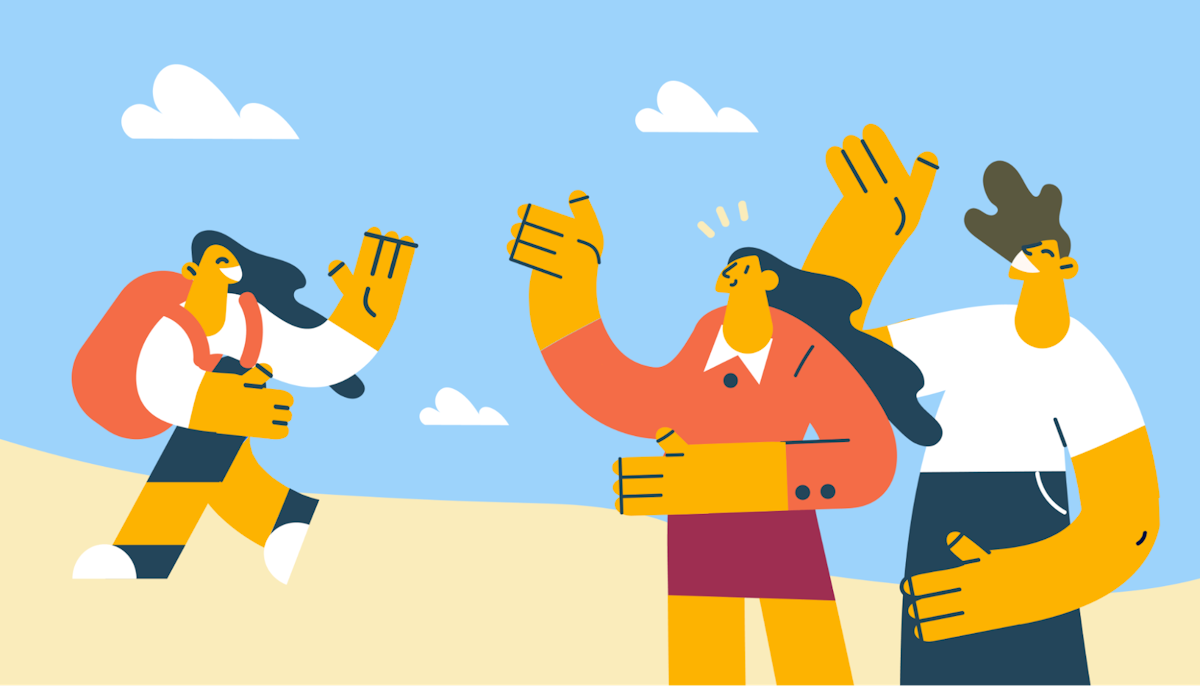FAFSA •
May 2, 2022
Everything you need to know about a FAFSA SAR
Need to learn about the FAFSA SAR? Read this guide from Mos to find out everything you need to know.

When it comes to paying for college, the Free Application for Federal Student Aid (FAFSA) is the most important part of your toolkit. The FAFSA is your single point of access to an incredibly wide range of federal student aid, state aid, and grants and scholarships offered by your school.
But because the FAFSA form is so important, it’s equally critical that you’ve got a document that references all the information included on your FAFSA. This is known as your FAFSA Student Aid Report (SAR), and it enables you to make sure everything on your financial aid application is correct.
This guide explains what the FAFSA SAR is, how to get your FAFSA SAR, why it’s important, and how long it takes to receive your SAR.
What is a SAR for FAFSA?
Before we speed right into how you can get your FAFSA SAR and why it’s important, let’s pump the brakes for a second and talk about what a FAFSA SAR actually is.
When you need to apply for financial aid to pay for college, your first port of call should be the Free Application for Federal Student Aid (FAFSA).
The FAFSA is the US Department of Education’s universal application form for students in need of student aid, and the federal government uses the information you include in your FAFSA to determine whether you’re eligible to receive government-backed loans or grants.
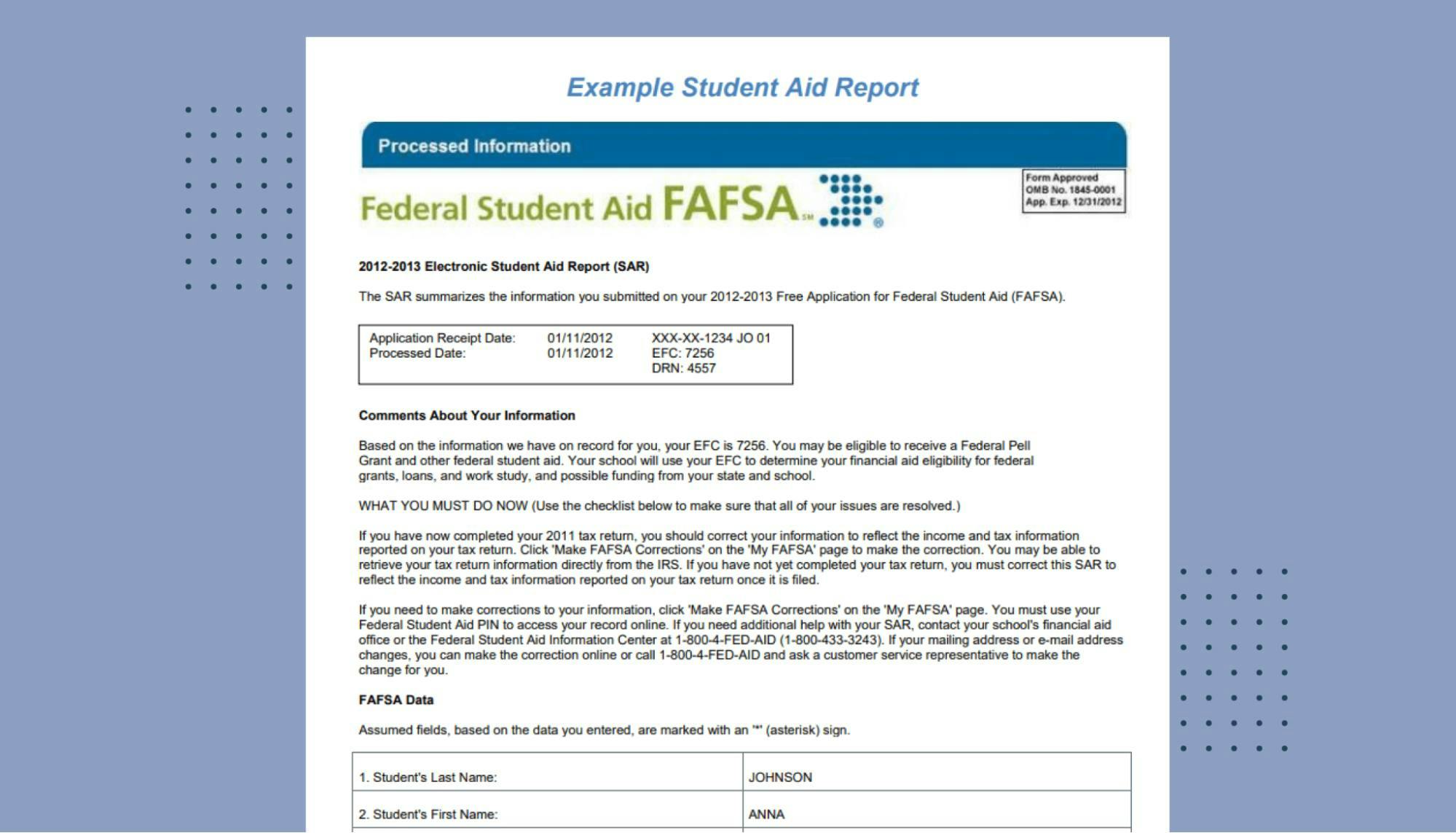
But the FAFSA isn’t only used by the federal government. State governments also use the FAFSA to assess whether you’re eligible for any state-specific grants or scholarships, and your college or university will use it to decide whether you’re eligible for school-specific support.
Translation: for a lot of students, the FAFSA is a total lifesaver — and your FAFSA SAR is one of the most useful components of the FAFSA.
So, what is a SAR?
After submitting your FAFSA form, you’ll get a Student Aid Report (SAR). Your SAR can take the form of either a paper or an electronic document, and it’s effectively a summary of all the information you included on your FAFSA form.
Your FAFSA SAR includes all the essential information about your Expected Family Contribution (EFC), your estimated eligibility for US federal student loans, your estimated eligibility for Federal Pell Grants, and whether you’ve been selected for verification.
What is getting selected for verification?
Sometimes your school will ask to see the documentation (or request extra documentation) in order to double-check that everything on your FAFSA form is 100% correct. If you’re selected for verification, don’t panic. You’re not being accused of breaking any rules.
Some people get selected at random, and some colleges choose to verify the FAFSA forms of every single student.
Bearing that in mind, it’s really important that you’re able to reference all of the answers you gave on your FAFSA form. This will give you the chance to double-check that all of the information you have included is correct before you get selected for verification.
How do I get my FAFSA SAR?
After submitting your FAFSA form, you should automatically get sent your SAR — but how you receive it will depend on whether you’ve opted for a paper copy or an electronic copy.
In order to get a digital FAFSA SAR, you’ve got to provide a valid email address on your FAFSA form. If you have included an email address with your FAFSA, you should then receive an email coming from “noreply@fafsa.gov.” That email will include detailed instructions on how you can access an online copy of your SAR.
If you haven’t included a valid email address on your FAFSA form, you’ll either get a paper SAR or a SAR Acknowledgement letter in the mail — but again, the letter you receive in the postal mail depends.
You’ll automatically get a paper SAR in the mail if you filed a paper FAFSA form and didn’t provide an email address as part of your financial aid application.
You’ll get a SAR Acknowledgement if you filed an electronic FAFSA form but didn’t provide a valid email address alongside your application.
Regardless of how you submitted your FAFSA or whether you provided an email address, you can always get a hold of your SAR online with your FSA ID. As long as your FAFSA information has already been processed, all you’ve got to do to access your SAR is log into fafsa.gov and enter your account username and password.
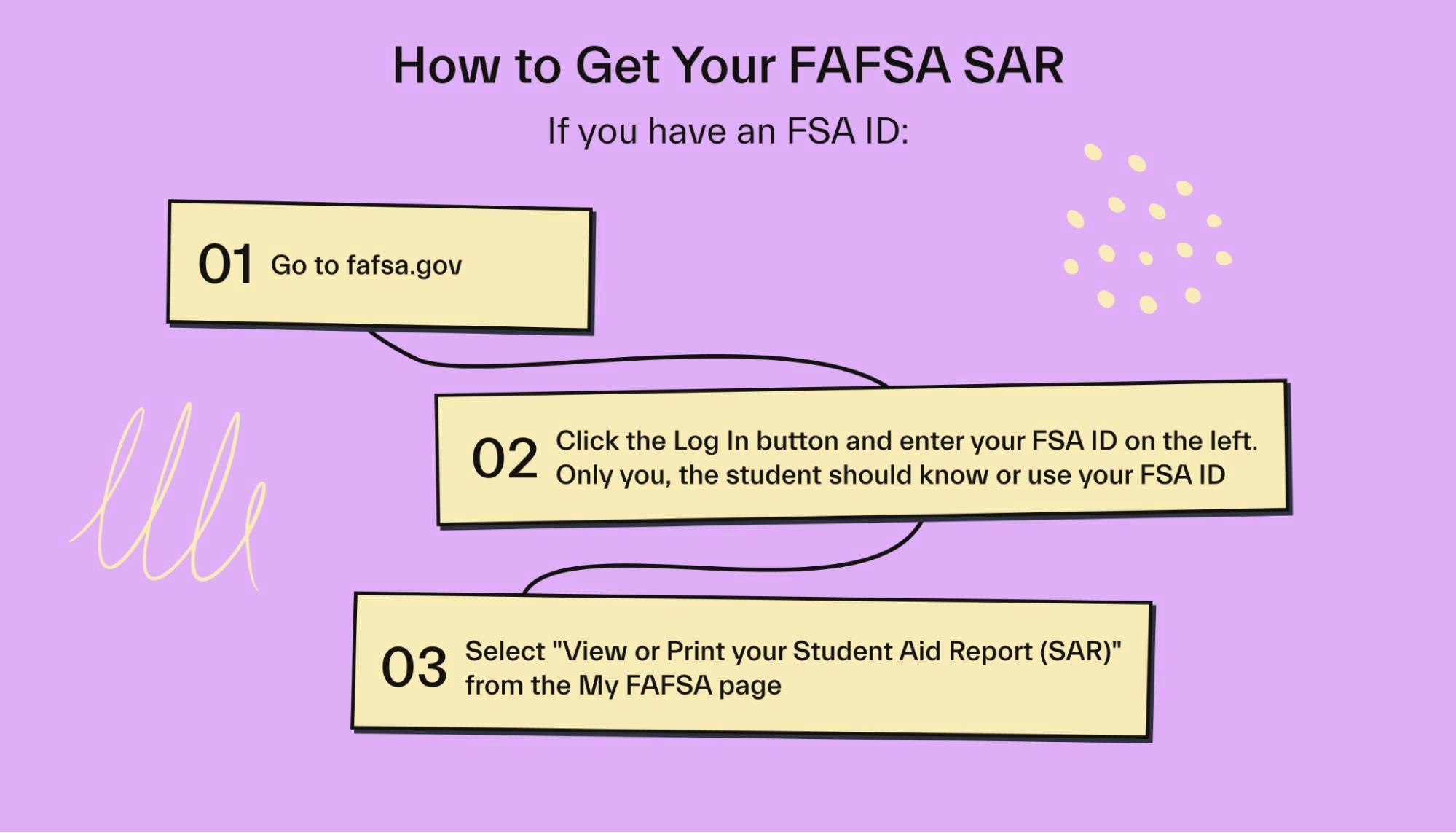
You’ll then be able to access the digital version of your FAFSA SAR.
In terms of access, it’s also important for you to remember that you won’t be the only person with access to your SAR data. Any of the schools that you listed on your FAFSA form will also get access to your digital SAR within 24 hours after the FAFSA form has been processed.
Why is SAR important for college?
We’ve already covered what a FAFSA SAR is and how to get a hold of one. But why exactly is a FAFSA SAR so important?
Your Student Aid Report (SAR) is so important because it contains some critical information about your financial aid. That makes it incredibly useful as a point of reference, but that also means it includes a lot of personal information that pertains to your financial aid status.
Your SAR is essentially a summary of all the information that you provided to the US Department of Education when you completed your FAFSA. One of the most important pieces of information your SAR includes is details about your Expected Family Contribution (EFC).
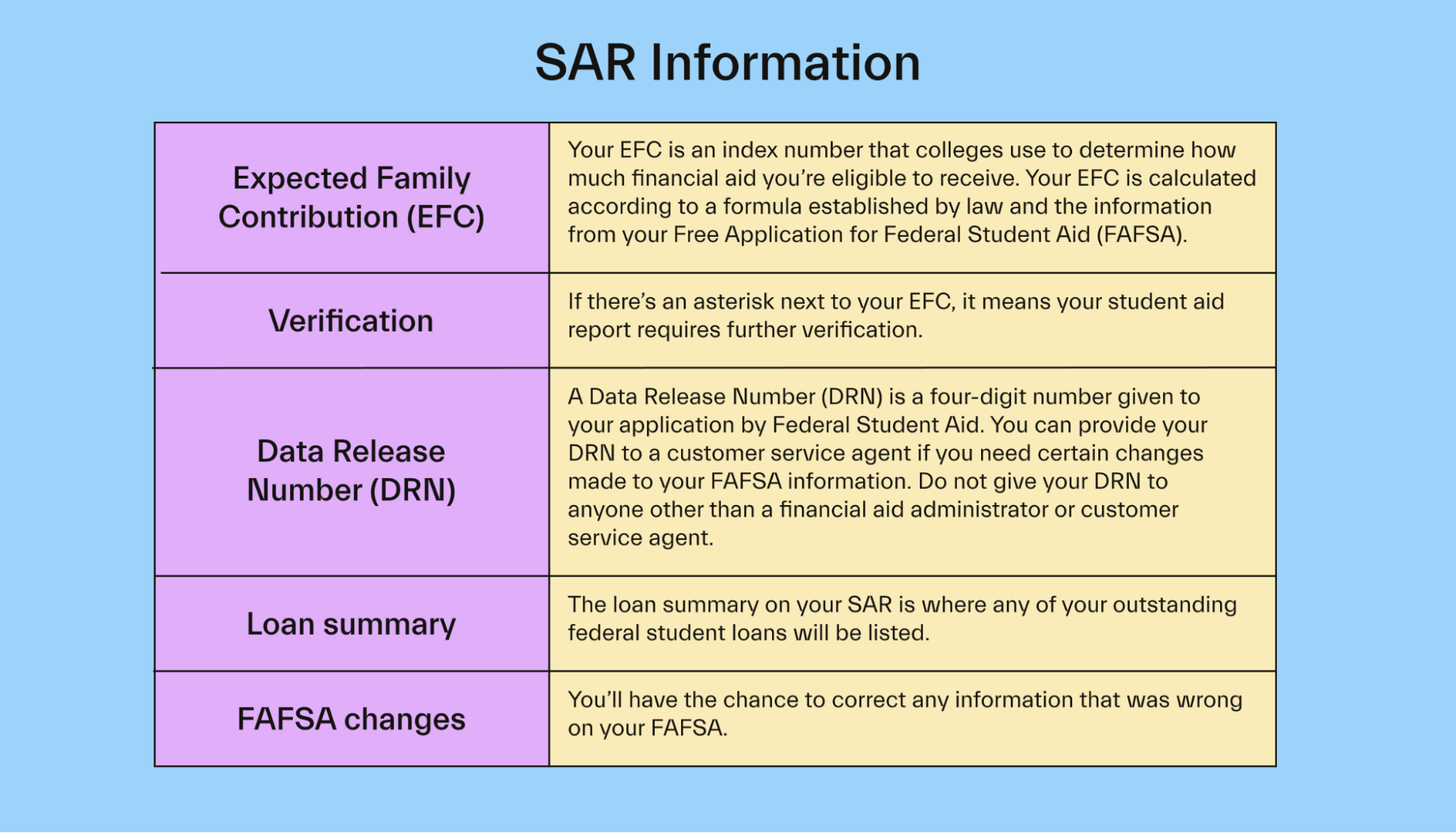
What is your EFC?
Expected Family Contribution is an index number that the financial aid staff at your college or university will use to decide how much financial aid you’d likely receive if you end up going to their school. This index number is calculated using the information you report on your FAFSA, and that formula is established by law.
The EFC formula factors in your family’s taxed income, untaxed income, assets, and benefits like Social Security or unemployment. Your family’s size and the number of people in your family who are planning to attend school during a given year also come into play when your school’s finance office works out your EFC.
It’s really important to bear in mind that your EFC isn’t the amount of money your family is going to be expected to fork out for college tuition — and it doesn’t correspond with the amount of federal student aid you’re going to receive, either. It’s simply a number your school uses to calculate how much financial aid you could technically receive on paper.
So, where can you find details about your EFC?
Once your FAFSA form has been completed and processed, your EFC should be available in the upper right-hand corner of your SAR’s first page. If you’re looking for your EFC on a digital SAR, you’ll be able to find it in the tab marked “Processing Results.”
If you haven’t finished your FAFSA application, you probably won’t be able to find an EFC on your SAR. Instead, you’ll get a notification telling you what steps you have to complete to resolve outstanding issues with your FAFSA. You can normally find details of these outstanding to-do items in the SAR section called “What You Must Do Now.” This section sits within the “FAFSA Data” tab.
But your Expected Family Contribution isn’t the only piece of information that makes your FAFSA SAR so important.
What is a DRN?
Your SAR will also include a Data Release Number (DRN). Your DRN is a four-digit number that should appear on the first page of your paper SAR or SAR Acknowledgement. It’ll be sitting in the upper right-hand corner (right next to your EFC).
On a digital copy of your FAFSA SAR, you can find your DRN in the little box at the top of each tab containing the “Application Receipt” and “Processed” dates.
Why is a DRN important?
A DRN is really important because it serves as a sort of identification number that connects you to your FAFSA information. In practice, it comes in handy if you ever had to change certain information on your FAFSA form. Your college or career school would require your FAFSA DRN to make any changes on your behalf.
What other information is in your SAR?
Finally, your SAR includes a pretty comprehensive summary of the all-around picture of your student finances. Your SAR has information about all of your federal student loans, your eligibility for federal student loans, your eligibility for federal grants like the Federal Pell Grant, and anything else you included in your FAFSA.
A lot of this stuff can be found in the “Financial Aid History” tab if you're accessing your electronic SAR online. As we’ve already mentioned, your SAR could also include a note which indicates that you’ve already been selected for verification. This is normally denoted with an asterisk by your EFC — but again, don’t panic if you’ve been selected for verification.
This is pretty routine for a lot of schools, and it doesn’t mean you’ve done anything wrong.
How long does it take to get your SAR from FAFSA?
Bearing in mind how important a FAFSA SAR is, you’re probably now wondering how long it takes to receive your SAR.
Again, the answer depends on whether you opted for a paper SAR or a digital SAR.
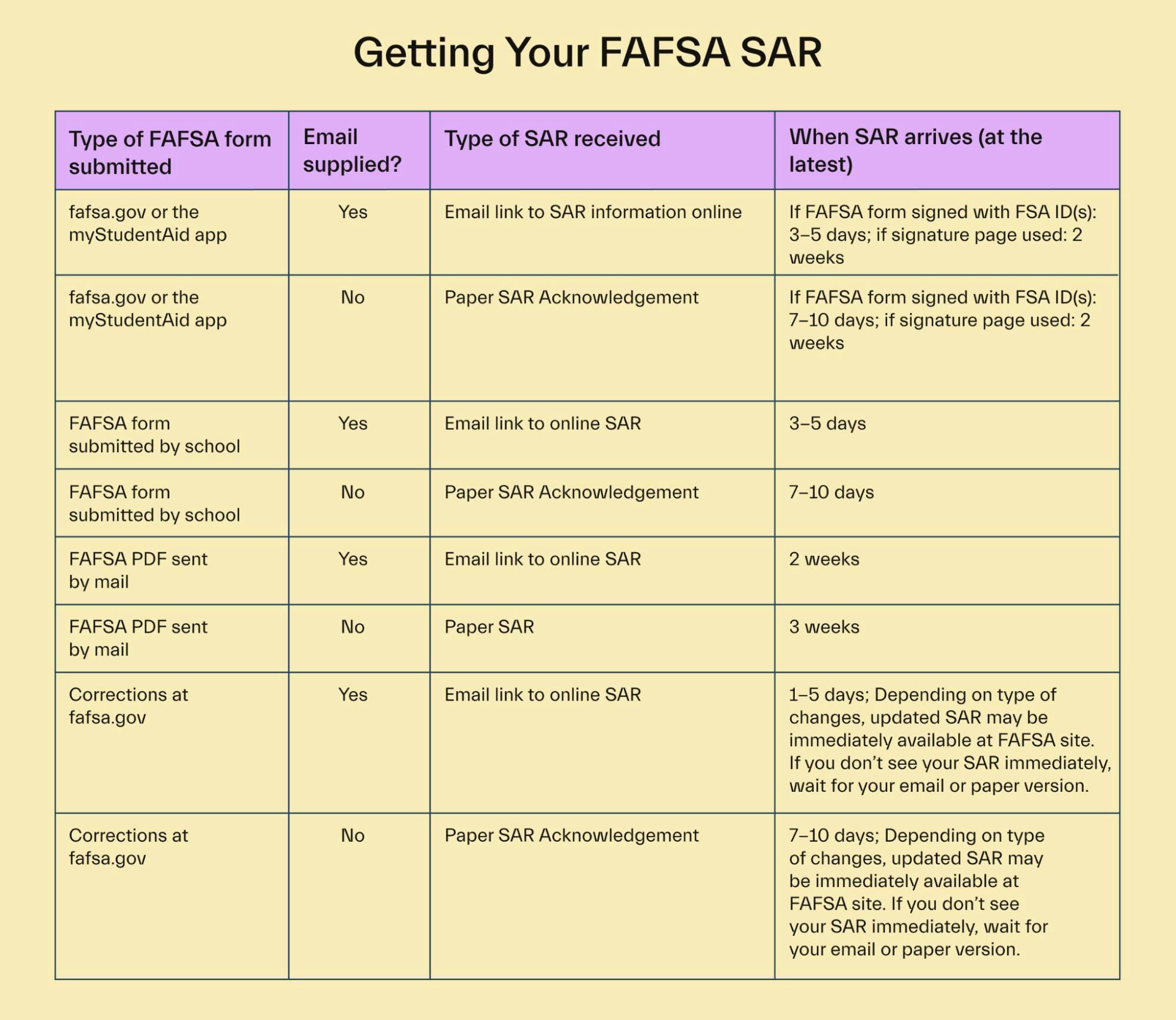
If you included a valid email address on your FAFSA form when you submitted it, you should receive an email as soon as your SAR is ready to view. That email will include a link to an online copy of your SAR with instructions on how to access it and any further steps you have to take.
Generally speaking, you should get this email within two weeks of sending in your FAFSA form. That being said, a lot of students get access to their online SAR way before that two-week mark.
If you don’t get an email about your FAFSA SAR within two weeks of sending in your application, there’s a way to check the status of your application. Simply head to “studentaid.gov” and click “Log In” on the homepage. You should then be able to see where your FAFSA application is at and whether your SAR is ready.
If you didn’t include a valid email address on your FAFSA form, you’ll automatically be sent a paper SAR or a SAR Acknowledgement letter via postal mail. You’ll also get a paper SAR if the Social Security Number (SSN) that you included in your FAFSA didn’t match the one that the Social Security Administration has on file for you.
If you didn’t sign your FAFSA form, chances are you’ll get a paper SAR in the mail, too.
While Federal Student Aid certainly does its best, you’ve got to remember that postal mail takes longer. That means, in some cases, it might be over two weeks before you get your paper SAR in the mail.
Conclusion
Everybody knows that a FAFSA is really important when it comes to bagging financial aid to pay for school — but what a lot of people don’t know is that your SAR is like an essential summary of your FAFSA.
It includes all the critical data you included in your application form, and that makes it a fantastic tool in your financial aid toolkit. Your SAR includes everything you and your school need to know about your EFC, as well as loan offers and eligibility for student grants.
So, if you ever have to reference any of the information that you included in your FAFSA to make sure everything is totally correct, your SAR should be your first port of call.
Because it’s such an important financial aid document, it’s equally crucial you understand how to get your hands on your SAR. Fortunately, Federal Student Aid has made the process of accessing and receiving your SAR really straightforward.
Want to learn more about the FAFSA and access to college funding? Explore Mos memberships today.
Let's get
your money
- Get paired with a financial aid expert
- Get more money for school
- Get more time to do you








